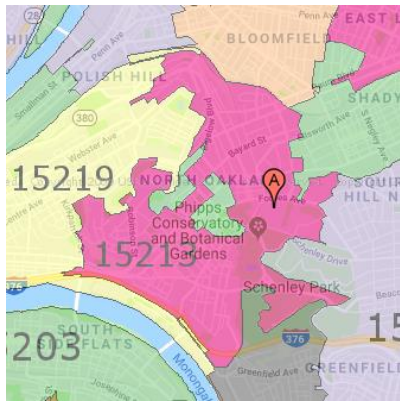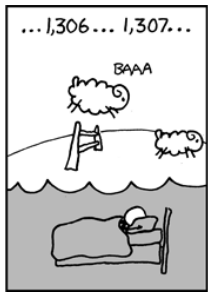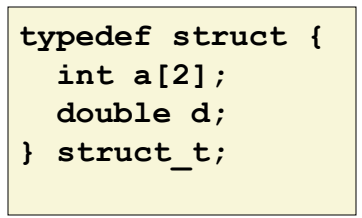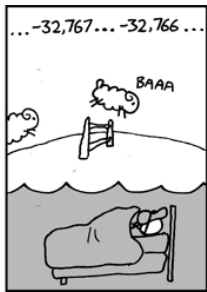15-213/14-513/15-513: Introduction to Computer Systems¶
约 362 个字 11 行代码 6 张图片 预计阅读时间 2 分钟 共被读过 次
1st Lecture, Aug 27, 2024
📌 Instructors¶
- 15-213/15-513:
🧑🏫 Phil Gibbons
🧑💻 Brian Railing - 14-513:
🧑🏫 Mohamed Farag
🧑💻 David Varodayan
🎯 Course Theme: Systems Knowledge is Power!¶
Key Outcomes:¶
- Become a better programmer:
- Find and eliminate bugs efficiently.
- Understand and tune program performance. - Prepare for advanced systems courses:
- Compilers, OS, Networks, Computer Architecture, Embedded Systems, etc.
🌟 The Five Great Realities¶
Great Reality #1: Ints ≠ Integers, Floats ≠ Reals¶
Example 1: Is \( x^2 \geq 0 \)?¶
- Floats: Always true.
- Ints:
- \( 40000 \times 40000 = 1600000000 \) ✅
- \( 50000 \times 50000 = \) Overflow ❌ (Result: \(-2147483648\) for 32-bit ints).
Example 2: Is \( (x + y) + z = x + (y + z) \)?¶
- Ints: ✅ (Associative).
- Floats: ❌
- \( (1e20 + -1e20) + 3.14 = 3.14 \)
- \( 1e20 + (-1e20 + 3.14) = 0 \) (Catastrophic cancellation due to limited precision).
Great Reality #2: You Must Know Assembly¶
- Why?
- Debugging: High-level abstractions break down.
- Performance tuning: Understand compiler optimizations.
- System software: Compilers/OS rely on assembly.
- Focus: x86 assembly.
Great Reality #3: Memory Matters¶
Memory Referencing Bug Example:¶
C
typedef struct {
int a;
double d;
} struct_t;
double fun(int i) {
volatile struct_t s;
s.d = 3.14;
s.a[i] = 1073741824; // Out-of-bounds access
return s.d;
}
Results:
-
fun(0) → 3.14 ✅-
fun(3) → 2.00000061035156 ❌ (Corrupted memory). Great Reality #4: Performance ≠ Asymptotic Complexity¶
- Constant factors matter!
- Example: Loop unrolling, cache locality.
- Memory Hierarchy:
- L1/L2 cache vs. RAM vs. Disk (4.3ms vs. 81.8ms access time).
Great Reality #5: Computers Do More Than Execute Programs¶
- I/O and Networking:
- Concurrency, unreliable media, cross-platform issues.
- Example: Web proxy lab (L7) → Handle HTTP requests concurrently.
📚 Course Components¶
Labs (50% of Grade)¶
- Data Lab: Bit manipulation.
- Bomb Lab: Reverse engineering.
- Attack Lab: Code injection.
- Cache Lab: Optimize memory locality.
- Malloc Lab: Implement
malloc/free. - Shell Lab: Build a Unix shell.
Written Assignments (20%)¶
- Peer-reviewed problem sets (drop lowest 2).
Final Exam (30%)¶
- Covers all course concepts.
⚠️ Academic Integrity¶
Cheating Examples:¶
- ❌ Copying code from peers/web.
- ❌ Using AI tools (ChatGPT, Copilot) for solutions.
- ❌ Reusing old code.
Consequences:¶
- Failing grade, expulsion, or retroactive penalties.
Allowed:¶
- ✅ Discuss high-level design.
- ✅ Use textbook/CS:APP code (with attribution).
💻 Lab Policies¶
- Grace Days: 5 per semester (max 2 per lab).
- Late Penalty: 15% per day after grace days.
📖 Textbooks¶
- Primary: Computer Systems: A Programmer’s Perspective (Bryant & O’Hallaron).
- Recommended: The C Programming Language (K&R).
🛠️ Tools & Infrastructure¶
- Shark Machines:
ssh shark.ics.cs.cmu.edu. - Autolab: Submit labs, view scoreboards.
🚀 Key Advice¶
- Start labs early!
- Commit code frequently (Git history matters).
- Attend bootcamps (GDB, Makefiles, C debugging).





